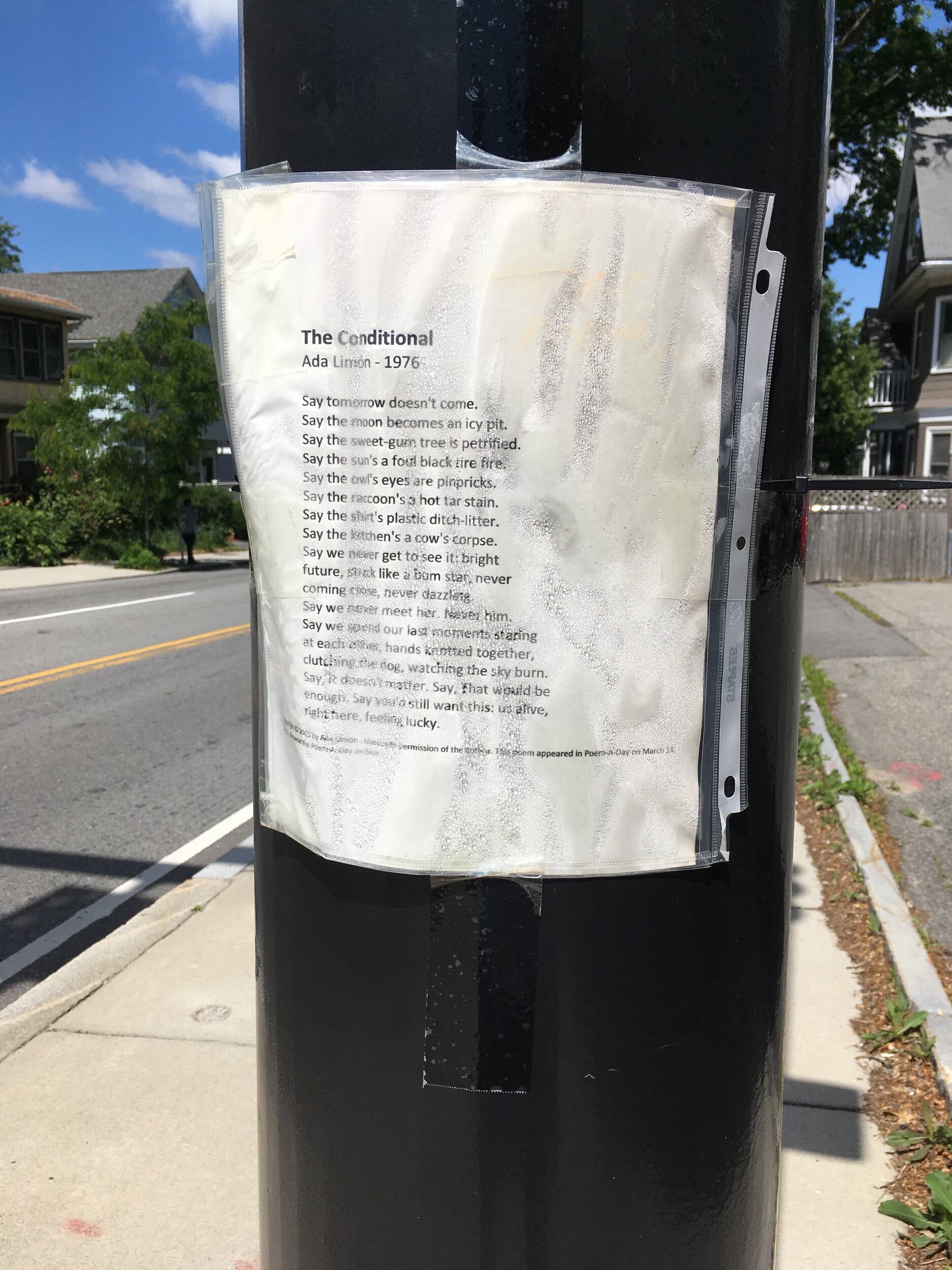Signs of Life
On my regular walks and jogs around my town, I’ve been noticing the reemergence of a classic neighborhood practice: homemade signage.
Advertisements pasted to walls and posters hung on stop signs have always been there, but I am seeing a new crop of signage that seems more intentional and personal—tailored to the moment we’re living in right now. Painted signs hung in windows, quickly-typed-up papers stuck onto park bulletin boards, sidewalk chalk spelling out greetings…all of it dots the streets and intersections I walk each day.
There are so many flavors:
Signs of encouragement and gratitude hung in windows—surely painted by children—reading things like “Thank you to our essential workers” and “Spread the love”
Signs connecting neighbors in need with resources like our local mutual aid network and food pantries
Signs challenging us around issues such as racial justice that read things like “Black lives matter” and “Join a protest in Cambridge Common this Saturday,”
Signs sharing art and poetry to inspire hope and reflection.
Organizing and resource-gathering is happening online more than ever before during a time when so many people are stuck at home, but this emergence of printed posters on fences and handwritten papers hung on lampposts feels more neighborly and more authentic. Instead of a massive Facebook group or a sea of anonymous complaints on NextDoor (or perhaps worse than anonymous: the same few people who constantly yell into the social media void), I can imagine the family that lives in the house I’m jogging past painting a poster with their children and hanging it in the window.
I feel connected to them and renewed by what they have shared. I am far more likely to stop and read a poster on my evening walk or be interested in donating to a cause because a neighbor shared it, than I am to respond to some random screed a high school acquaintance posts on Instagram.
Here are some of the signs I’ve been noticing lately—from soccer to support to poetry:




The pandemic is bringing us all closer to our homes and our neighborhoods. We’re spending more time on nearby sidewalks than in cars rushing off to distant workplaces, restaurants or shopping malls. Let’s embrace that and spend our days truly engaging with the people who live down the block—whether we see them in person or read their notes on a sign.
A strong town is a place where the needs of neighbors drive local decisions and priorities, a place where we know those who live around us and seek to understand what would make our city more prosperous for everyone. I see these signs around me—sharing resources, advocating change, inspiring hope—as small steps toward neighbors knowing one another and tuning in to each other’s needs and values.
What signs have you see in your neighborhood? Signs of hope? Signs of life?





At the Table is a podcast that discusses how community-based ministries can contribute to the common good, and they recently invited Strong Towns President Charles Marohn to appear on an episode. Up for discussion: the Suburban Experiment and the role of religious institutions in community development.